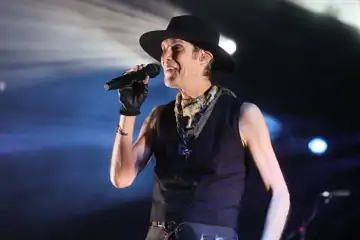
It requires a substantial vision and complex craft to subject an audience to three hours of performance. However well intentioned, though, blind fingerpainting does not fulfil the criteria.
Duck Hunting tells the story of the young white man having an existential crisis given his lot in life: his marriage is failing, his friends are fragmenting, and he's stuck in a mundane job. What twist does Duck Hunting offer us to this classic tale?! There is no twist in sight. It is a story of epic length and miniscule proportions.
The director notes that his influences are Theater Vakhtangov, Moscow Art Theatre, Stanislavski, Meyerhold, Chekhov and Peter Brook. Too many cooks spoil the broth. Influences exist to create your own style. The direction of Duck Hunting, though, saw literal transcriptions of the disjointed styles into this piece. Whiteboard markers loaded a shotgun, expressionistic gestures were thrown into the air of a hyperrealist space, and AV projections were used for everything from door-knocking outside to 'poignant' metonymy using a cat. Such projections were poignantly metonymic references to the failure of the direction to achieve...anything really.
The show's intentions are sincere. Contemporarian Theatre Company have read a new script and decided to give it an artistic life on the stage. However, both the script and the direction lack one essential ingredient: a pair of ears. Development from either place would have seen major revolutions. The product we are presented with, however, is deaf. It wants to tell its story and doesn't deign to listen to how it could best do it. Audiences will not want to hear it.















